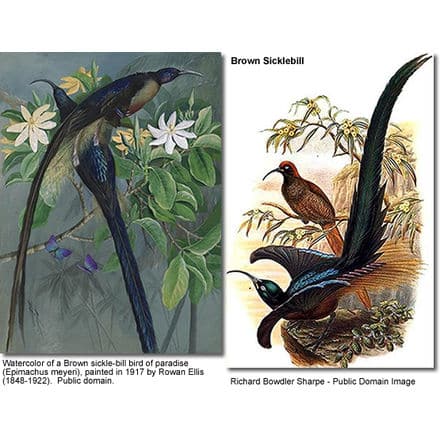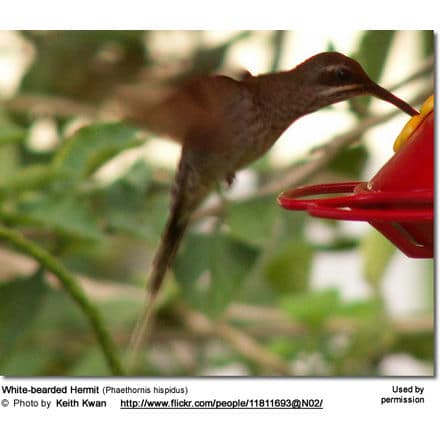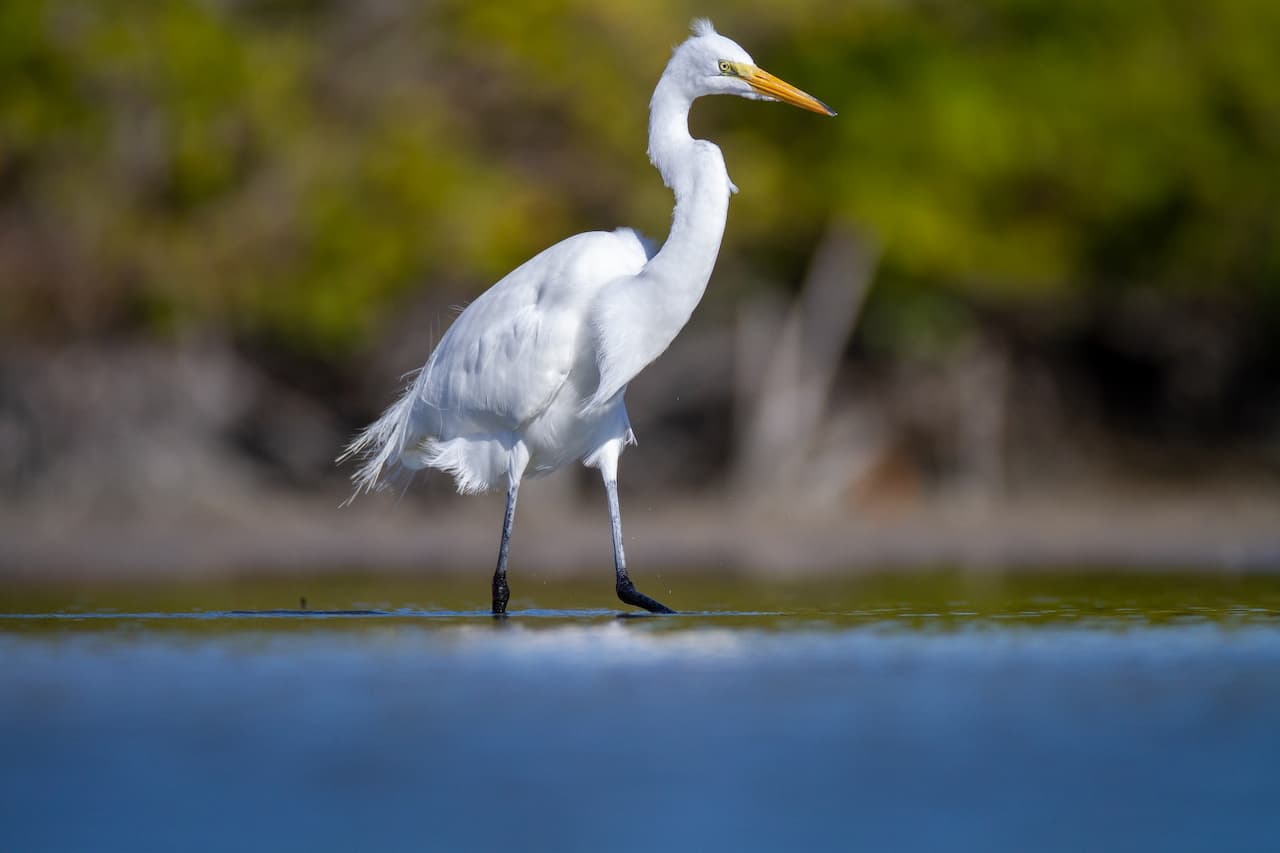Brown Sicklebills
The Brown Sicklebills (Epimachus meyeri) is endemic to the mountain forests of New Guinea (situated to the north of Australia in the southwest Pacific Ocean).
Subspecies and Distribution
- Epimachus meyeri albicans ( van Oort, 1915)
- Range: Central Cordillera of New Guinea from Weyland Mountains east to Hindenburg and Victor Emanuel Mountains.
- Epimachus meyeri bloodi (Mayr and Gilliard, 1951)
- Range: Inhabit the mountains of eastern New Guinea from at least Mountain Hagen and Mountain Giluwe (probably from Doma Peaks/Tari region) – east to Kratke Range just west of Watut/Tauri Gap.
- Epimachus meyeri meyeri (Finsch and A. B. Meyer, 1885)
- Range: Found in the mountains of southeastern New Guinea E from Mountain Missim (east of Watut/Tauri Gap) and Ekuti Range.
Alternate (Global) Names:
English: Meyer’s Sicklebill, Brown or Meyer’s Sickle-billed Bird-of-paradise, Grey Saber-tailed Bird-of-paradise; Indonesian: Burung dewata paruh sabit coklat, Paruhsabit Coklat; French: Paradisier de Meyer, Épimaque brun; German: Schmalschwanz-Paradieshopf, Schmalschwanz-Sichelhopf; Spanish: Ave-del-paraíso de Meyer, Pico Corvo Castaño; Italian: Falcibecco bruno, Uccello del Paradiso di Meyer; Czech: Rajka Meyerova, rajka modrooká; Danish: Brun seglnæb; Finnish: Ruskosirppinokka; Japanese: chairokamahashifuuchou; Dutch: Meyers Sikkelsnavel, Meyer-sikkelsnavel; Norwegian: Brunsigdnebb; Polish: pyszalek wspanialy, pysza?ek wspania?y; Russian: ????? ?????????? ??????? ?????; Slovak: rajka hnedá, Rajka úzkochvostá; Swedish: Brun bågnäbbsparadisfågel; Tai: Garag-Nan
Description:
The Brown Sicklebills averages 38 inches or 96cm in length. The plumage ranges from a highly iridescent dark brown to black. The bill is sickle-shaped. The eyes pale blue.
The male has ornamental plumes on the sides of his chest and a huge sabre-shaped central tail feathers for which they are hunted by the natives. The female is mostly reddish brown with buff barred black below.
Similar species:
- The Black Sicklebill looks similar to the Brown Sicklebill (which replaces it at higher elevations), but can be differentiated by the finer, more down curved bill and pale blue eyes. The Black Sicklebill is also larger.
Diet / Feeding
The Brown Sicklebills forage for fruit and small animals in the tree canopy; as well as probing into moss and plants for insects and other arthropods, such as crabs, lice, shrimp, spiders, scorpions, centipedes and millipedes.
Calls / Vocalizations
The males make paired, sharp, liquid quik, quik and simple nasal contact calls.
Breeding / Nesting
The Brown Sicklebills do not form strong pair bonds. The male will mate with several females over the breeding season. In order to attract females, he performs a horizontal courtship display with the pectoral plumes raised around his head. The female builds the nest and attends to the young alone.
Status
The Brown Sicklebill is evaluated as Least Concern on the IUCN Red List of Threatened Species. It is listed on Appendix II of CITES.

Birds of Paradise … Bird of Paradise Photo Gallery





